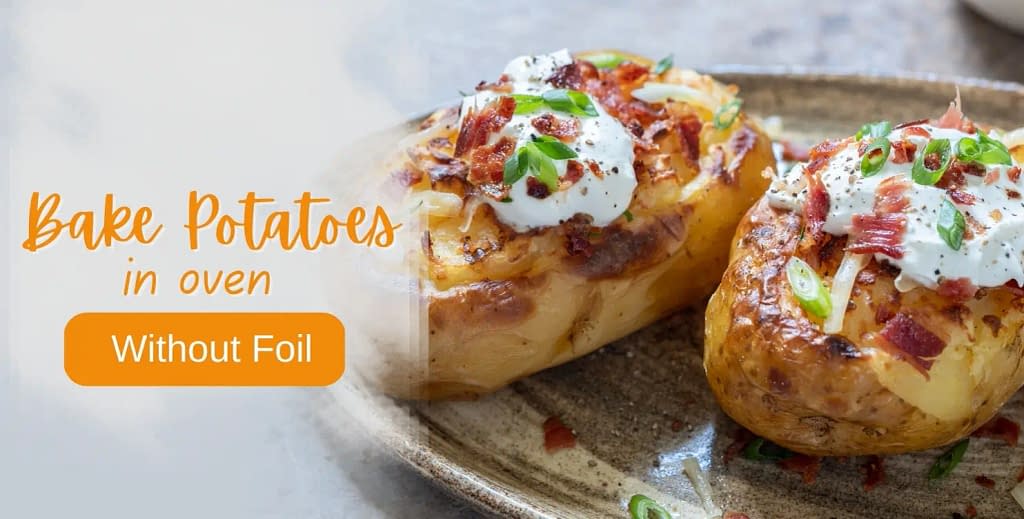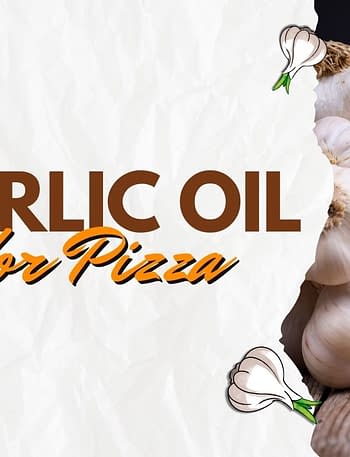
You might fuss with aluminum foil every time you want to bake potatoes. It’s time to ditch that stubborn foil and embrace a simpler, tastier technique – baking your potatoes directly on the oven rack. Not only will going foil-free save you time and hassle, but it also delivers potatoes with an irresistibly crispy exterior surrounding a heavenly light and fluffy interior.
In this guide, we’ll walk through the straightforward process of How to Bake Potatoes in Oven Without Foil, sharing tips to achieve that perfect outer crunch while keeping the insides luxuriously soft and packed with potato flavor.
Table of Contents
Selecting Your Potato Variety
The type of potato you choose can greatly influence the outcome when baking foil-free. While you can use any variety, some hold up better than others.
Russet potatoes, commonly known as Idaho or baking potatoes, are the prime pick thanks to their high starch content that creates an ideally fluffy texture once baked. Their thick skins also help prevent the insides from drying out under the oven’s direct heat.
If you prefer a dense, creamy, buttery potato, go for Yukon Golds. Their yellow flesh and rich flavor make them downright delicious when simply baked and seasoned.
For a nutrient-rich option, opt for sweet potatoes. Their natural sugars beautifully caramelize in the oven’s high heat, yielding an exceptionally tasty and healthy treat.
Preparing Your Potato
Before those taters hit the oven, you’ll need to prepare them using a few simple tricks. Start by giving them a thorough scrub under water to remove any dirt, debris, or residue. Pat them fully dry with a clean kitchen towel.
Next, use a fork to prick several holes all over each potato. This crucial step allows steam to escape properly during baking, preventing any potential explosions from occurring.
Once pricked, rub or brush the potato skins with a coating of olive oil, melted butter, or other fat. This helps create that coveted, crispy, crunchy exterior as they bake. You can also sprinkle on any desired seasonings at this stage, like salt, pepper, garlic powder, paprika, or dried herbs.
Place your prepared potatoes either directly on the oven rack with a baking sheet positioned on a lower rack to catch any drips or on a parchment-lined baking sheet. Baking right on the rack promotes maximum browning and crisping.
Seasoning for Incredible Flavor
While a simple sprinkle of salt and pepper is always a winning baked potato seasoning, you can easily amplify the flavors to create something extra special. Have fun experimenting with different spice blends and coatings!
Try tossing your potatoes in olive oil, garlic powder, smoked paprika, and dried thyme before baking them for a zesty, herby, lightly smoky flavor profile. Or coat them in a blend of salt, pepper, garlic powder, and dried rosemary for an earthy, aromatic taste.
For something bright and fresh, rub the potato skins with olive oil and a blend of minced parsley, chives, rosemary, and lemon zest prior to baking.
The direct oven heat will help intensify any herbs, spices, and seasonings you use, creating a flavor-packed potato.
Baking to Perfection
When baking potatoes without the cover of foil, there are a few key tips to follow. First, be sure to properly scrub, dry, and prick your potato skins before coating them with oil and seasonings. This helps achieve that perfect crispy exterior surrounding those fluffy insides.
Next, consider brushing your potatoes with olive oil, melted butter, or other fat, along with your chosen herbs and spices like rosemary, thyme, garlic powder, or paprika. This infuses the skins with delicious savory notes as they bake.
Don’t forget to prick several holes all over each potato before baking – this allows steam to escape so you avoid any busted skins.
Follow these simple guidelines, and you’ll be pulling gloriously golden brown, crispy-skinned potatoes from your oven in no time; no foil is required.
The Final Touches
Once your foil-free baked potatoes are out of the oven, you can test for doneness by giving them a gentle squeeze. They should give just a bit under the pressure, indicating a perfectly fluffy interior when properly cooked through.
For an extra crispy, crunchy exterior, brush or rub the potato skins with olive oil, melted butter, or other fat before baking. This creates an extra crisp and crackly outer layer.
Now it’s time to load up those freshly baked spuds! Set out an array of favorite baked potato toppings like sour cream, shredded cheese, bacon bits, sliced green onions, or salsa. This allows everyone to customize their potato to their tastes.
Get creative with unique topping ideas like balsamic glaze, pesto, barbecue sauce, crumbled blue cheese, or garlic-herb compound butter. You can go as simple or as adventurous as you like!
For a fun, interactive dining experience, set up a DIY baked potato bar at your next gathering. Provide a variety of different fillings so guests can craft their own loaded baked potato creation exactly how they like it.
The Benefits of Going Foil-Free
Baking potatoes directly on the oven rack without using aluminum foil offers several advantages over the traditional foil-wrapped method:
- It creates an irresistibly crisp, crunchy outer skin surrounding those perfectly light, airy insides. The direct oven heat promotes excellent browning and crisping.
- You avoid any potential metallic or other off-flavors that can sometimes occur when baking in foil.
- Ditching the foil cuts down on waste and is more eco-friendly.
- It’s a quicker process since you can skip the step of individually wrapping each potato.
- You may reduce your exposure to some potentially harmful chemicals found in aluminum products.
Conclusion
Ditch the Foil for Baked Potato Perfection Baking potatoes in the oven without using aluminum foil is a straightforward technique that yields incredibly delicious results. By baking them directly on the oven rack, you get potatoes with an irresistibly crispy, crunchy exterior surrounding a fluffy, soft interior bursting with natural potato flavor.
Not only does this foil-free method produce superior-tasting potatoes, but it also saves you time and hassle by skipping the tedious wrapping process. It’s an eco-friendly way to prepare baked potatoes while reducing potential exposure to chemicals found in aluminum products.
FAQ
Is it really possible to bake potatoes without aluminum foil?
Yes, absolutely! Baking potatoes directly on the oven rack without any foil allows you to achieve spuds with a delightfully crispy, crunchy exterior and fluffy, potato-y interior.
How long does it take to fully bake potatoes without foil?
It typically takes 45 minutes to 1 hour for potatoes to become fully cooked through when baking without foil. This can vary slightly based on the size of your potatoes and your oven temperature.
Why do I need to poke holes in the potatoes before baking?
Pricking holes all over the potato skins with a fork allows steam to escape properly during the baking process. This prevents any potential potato explosions or split skins.
What oven temperature works best for baking potatoes sans foil?
Preheat your oven to 400°F (200°C) when baking potatoes without foil. This high heat helps achieve that perfect crispy, crackly skin surrounding a fluffy interior.
Can I wrap my potatoes in parchment instead of foil?
Yes, parchment paper can be used to wrap potatoes for baking if you don’t want to cook them directly on the oven rack. The results won’t be quite as crispy, but it’s a good foil-free option.
How do I know when the potatoes are fully cooked through?
Give your baked potatoes a gentle squeeze – if they give just slightly under the pressure, that means the insides are perfectly light and fluffy, and the potatoes are fully cooked. You can also poke them with a small knife to check for doneness.
What are some tasty seasoning ideas for extra flavor?
Get creative seasoning your potatoes before baking! Delicious flavor combinations include garlic powder, paprika, and dried oregano; olive oil, rosemary, salt, and pepper; or a herby blend of parsley, chives, rosemary, and lemon zest. The options are endless!





